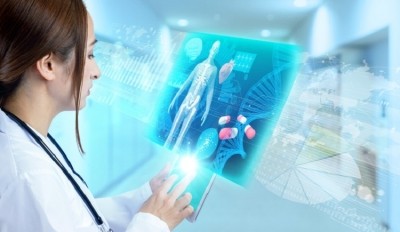BARDA enlists Current Health in COVID-19 monitoring

Current Health will work with the Biomedical Advanced Research and Development Authority (BARDA) in an effort to support caregivers in monitoring the status of COVID-19 patients, detect deterioration in their health before it occurs, and predict the likely severity of their disease in advance. The work will utilize Current Health’s remote-monitoring platform to assist in management and treatment of patients, and to develop a digital biomarker-based algorithm that can alert to the need for hospitalization and ICU-level care.
Outsourcing-Pharma (OSP) discussed the initiative with Stewart Whiting (SW), chief technical officer of Current Health.
OSP: What are some of the benefits of advanced monitoring of COVID-19 patients?
SW: By using advanced remote patient monitoring (RPM) solutions, clinicians can continuously monitor key vital signs, such as respiration rate and oxygen saturation of COVID-19 patients, allowing them to capture the broadest picture of human health and the patient’s symptoms.
This advanced monitoring ensures that COVID-19 patients are continuously observed and providers are proactively alerted when any issues are detected, enabling earlier intervention and better outcomes for COVID-19 patients.
For instance, if a patient’s movement level is low, their oxygen levels drop or their core temperature shows a fever, an alert would immediately be sent to care staff who could analyze the symptoms. Staff can then either intervene through a virtual visit, phone call or text message, recommend the patient comes to the hospital or clinic, or send an ambulance if the patient becomes critical.
This can also help to keep immunocompromised patients, such as those with diabetes or cancer, and lower-risk COVID-19 patients away from the hospital and clinics by enabling remote patient management in homes or particular units. This not only limits exposure to and spread of COVID-19, but also frees up hospital resources (beds, staff, PPE) for those who need it most.
OSP: Please share how Current Health’s remote monitoring platform will be used to manage/treat COVID patients and develop the digital algorithm to help predict treatment strategy.
SW: Continuous monitoring of these patients will support development of a digital biomarker-based algorithm, which will:
- Predict COVID-19 patients’ needs for hospitalization and ICU-level care by identifying those at risk of rapid deterioration and proactively alerting physicians to potential issues, driving earlier intervention and treatment
- Improve how high-risk patients with COVID-19 are identified, monitored and managed throughout their recovery
- Accelerate patient discharge from hospital and reduce ED visits. This is critical as hospitals seek to maintain capacity
Not only does our platform enable healthcare providers to manage and treat COVID-19 patients, it also enables hospital systems to determine how to best allocate limited resources—i.e. healthcare workers and beds—and contains the spread of infectious diseases by managing care for lower-risk patients remotely.
OSP: How might this data be of use to clinical research and drug development professionals?
SW: The continuous biomarker data collected by our platform can be used by pharmaceutical companies and medical research facilities, like the Mayo Clinic, to better understand how COVID-19 presents and evolves across diverse populations as they conduct trials to further understand and combat the disease through research and a vaccine. By analyzing the vast amounts of data collected, clinical researchers and drug development professionals can accelerate COVID-19 understanding and treatment efforts, and ultimately pave the way for better care in the future.
This data will also be used to develop, train and validate new digital biomarkers and therapeutics that predict the likelihood of severe COVID-19 cases. Ultimately, this algorithm will enable more patients with COVID-19 to be safely monitored, managed and treated at home.















